Quick Solutions for Effective Cold Sore Relief
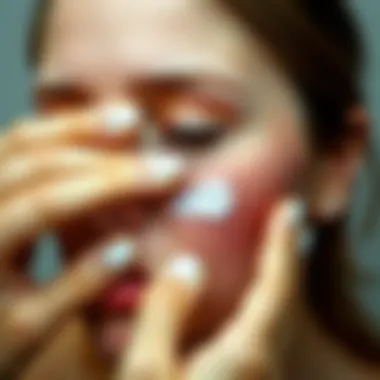
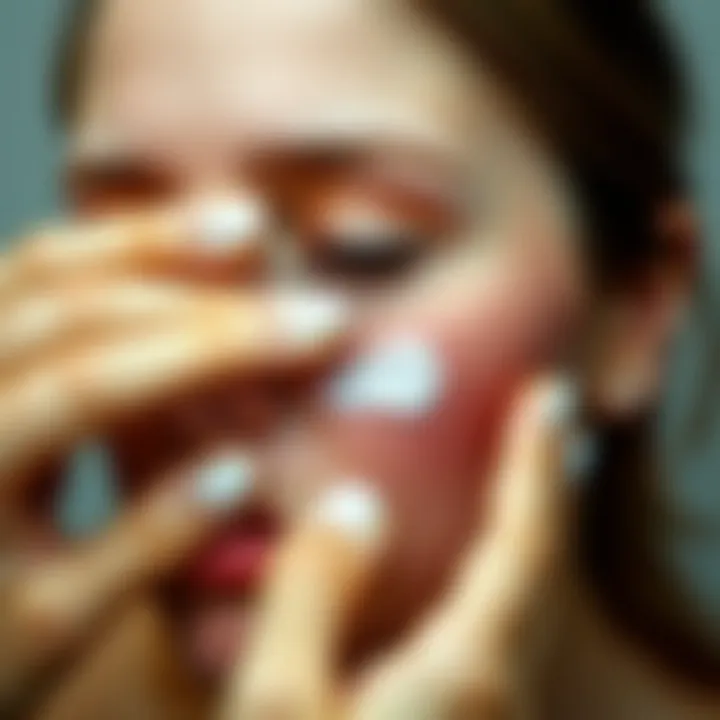
Intro
Cold sores, those pesky little blisters, often sneak up when least expected, becoming unwelcome guests on our lips. Caused by the herpes simplex virus, these sores can be painful and embarrassing, stirring up a cocktail of discomfort and distress. Managing these outbreaks swiftly is not merely a quest for aesthetic improvement; it’s about achieving a sense of normalcy and restoring one's confidence while navigating the social world.
This article uncovers real-life solutions that can aid in alleviating the symptoms of cold sores. From vital lifestyle adjustments to topical remedies that promise early relief, the goal here is straightforward: clarity and efficacy. Navigating through various methods, we will unravel practical insights that fuse both traditional wisdom and modern science, equipping you with the tools necessary to face cold sores head-on.
Such knowledge serves not just to relieve immediate discomfort but also arms you with preventive tactics that can shield you against future outbreaks. Are you ready to take the plunge into the myriad of effective strategies? Let’s go!
Health Benefits
Cold sores carry more significance than most folks realize. The implications of dealing with them reach beyond mere appearance and go directly into both physical and mental health realms.
Physical Health Benefits
Managing cold sores efficiently can lead to a smoother, healthier overall physical experience:
- Reduced Pain and Discomfort: Immediate interventions reduce the size and duration of cold sores, leading to less physical suffering.
- Fewer Complications: Quick management helps minimize any potential secondary infections that could arise from continuous touching or scratching of open sores.
- Healthier Skin Regeneration: Many effective treatments encourage rapid healing and skin renewal, building resilience against future outbreaks.
Mental Health Benefits
It's no secret that our physical health and mental wellbeing are intertwined. Effective management can also reap psychological rewards:
- Increased Confidence: No one wants to feel insecure due to a sudden flare-up. Successfully managing cold sores allows individuals to regain their self-esteem.
- Less Anxiety: Knowing there are practical strategies at one's disposal can alleviate the anxiety surrounding sudden outbreaks.
- Enhanced Social Interactions: Being able to engage without the worry of an outbreak can vastly improve one's social life, making it easier to connect with others.
"A proactive approach not only aids the body but also the mind, steering you towards a more fulfilling life moment by moment."
Practical Tips
To tackle cold sores head-on, incorporating specific lifestyle practices can make a world of difference. Let’s explore practical approaches centered around nutrition and physical activity.
Healthy Eating Guidelines
Nutrition plays a crucial role in supporting your immune system and possibly reducing the frequency of outbreaks. Here are some dietary essentials:
- Increased Vitamin C Intake: Citrus fruits, strawberries, and bell peppers can boost immune function, helping to fend off infections.
- Focus on Zinc-rich Foods: Foods like beans, nuts, and whole grains enhance healing capabilities when outbreaks occur.
- Stay Hydrated: Drinking enough fluids is crucial for overall skin health and can potentially aid in faster healing.
Effective Workout Routines
A regular exercise regime not only boosts your immunity but also supports overall well-being:
- Cardio Workouts: Activities like brisk walking, swimming, or cycling can elevate your heart rate and enhance immune functions.
- Mindfulness Practices: Engage in yoga or tai chi. They are not just exercise; they’re ways to manage stress, which can help curb cold sore outbreaks.
- Consistency is Key: Establish a routine that blends both cardio and mindfulness to harness their collective benefits against stress-induced flare-ups.
Understanding Cold Sores
Cold sores, often referred to as fever blisters, are the unwelcome guests that pop up on or around the lips. They arrive with not just annoyance but a significant dose of embarrassment for many. Understanding cold sores is pivotal. It allows individuals to recognize early signs, making it easier to handle and combat them effectively. Also, it's essential for those guiding others in wellness, as this knowledge aids in effective treatment discussions and strategies. The more aware one is, the better equipped they are to minimize the discomfort and societal stigma associated with these lesions.
The Herpes Simplex Virus Explained
At the heart of cold sores lies the herpes simplex virus, typically categorized into two types: HSV-1 and HSV-2. While HSV-1 is the usual culprit behind lip cold sores, HSV-2 is generally related to genital herpes. Interestingly, HSV-1 has become a widespread virus, with the majority of adults carrying it, often without knowing it. The virus sleeps in the nerve cells, patiently waiting for the right conditions to emerge, which can include triggers such as stress or sun exposure.
The virus can be transmitted easily through oral contact, even when sores aren’t visible. Understanding the nature of the herpes simplex virus sheds light on prevention and management strategies. Realizing that it can be a part of many people’s lives reduces the stigma and encourages more open health conversations.
Symptoms of Cold Sores
The symptoms of cold sores typically emerge before the blister even appears. Many people experience a tingling or itching sensation around the lips, signaling that something is brewing. This prodromal phase can vary in duration but often begins one to two days before the cold sore manifests.
Once the blister forms, it usually goes through a few distinct phases:
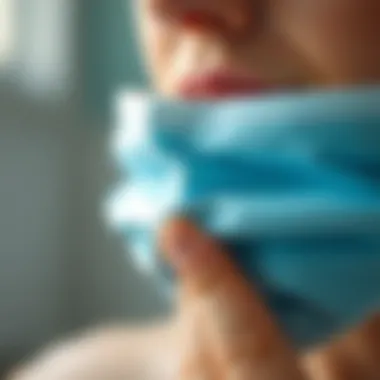
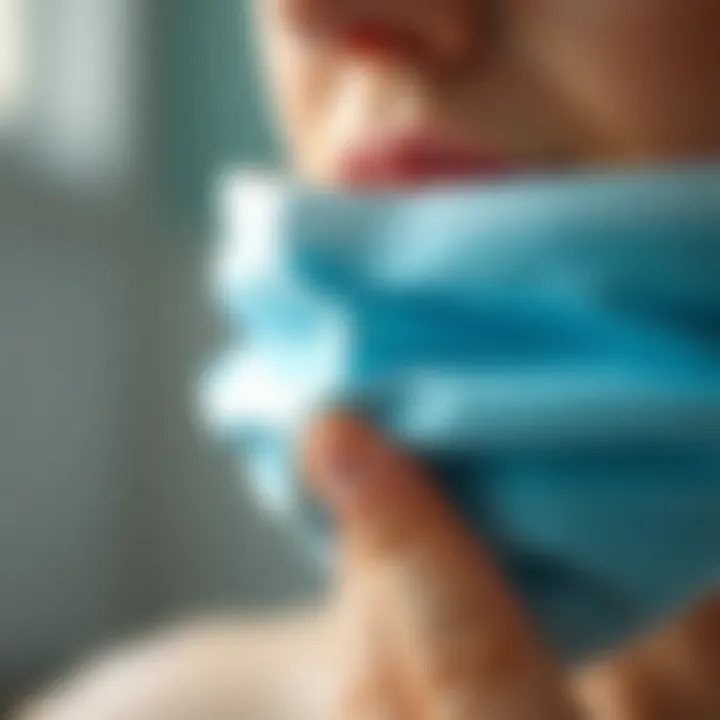
- Blister Formation: Small, fluid-filled blisters usually appear on or around the lips.
- Weeping and Crusting: Blisters burst and ooze, creating crusty sores.
- Healing: Following crusting, the sores gradually heal without scarring.
This entire process can take about 7 to 10 days. Being well-versed in these symptoms not only aids in spotting a cold sore earlier but also empowers individuals to take prompt action to minimize its duration and impact.
A proactive approach in recognizing and responding to cold sore symptoms can significantly enhance recovery speed and reduce the chance of spreading the virus.
The Cold Sore Lifecycle
Understanding the lifecycle of a cold sore is crucial for anyone seeking to manage or eliminate them swiftly. Cold sores, primarily caused by the herpes simplex virus (HSV-1), have a distinct progression from initial infection to healing. Gaining insight into this lifecycle offers individuals better control over treatment options, enabling them to act promptly when they notice symptoms.
Knowing the lifecycle guides decisions on preventive measures and immediate interventions, thereby decreasing the overall discomfort and stigma often associated with these lesions. It emphasizes the importance of timely action and appropriate methods to lessen the symptoms and speed up recovery.
Stages of Development
Cold sores typically follow a well-defined sequence of stages. These stages—tingling, blistering, weeping, and crusting—provide essential markers for those affected. Each stage brings its own symptoms and duration, which can vary from person to person.
- Tingling and Itching (Prodromal Phase): This is where it all begins. Often, an individual may feel a tingling or burning sensation on the lips or around the mouth—the telltale sign that a cold sore is about to hit. It usually occurs about one to two days before the actual sore becomes visible.
- Blistering: After the initial signs, small, fluid-filled blisters appear. They may cluster together and create an uncomfortable sensation. During this phase, the sore is highly contagious. It’s best to avoid close contact with others and to refrain from touching the blisters.
- Weeping: Once blisters break, they will ooze fluid which can be quite uncomfortable. This stage often feels the worst, as it can be painful and changes one's daily interactions. It's a time when preventative practices become vital to avoid spreading the virus.
- Crusting: Eventually, the blisters dry out and form a crust. This is the beginning of healing, but it can remain red and tender for a while. People often wear the marks of a cold sore even after healing, highlighting the emotional impact of these lesions.
Recognizing these stages not only helps in understanding the cold sore's behavior but also aids individuals in identifying the most effective treatments for each phase.
Duration and Healing Time
The entire lifecycle of a cold sore generally ranges from about 7 to 10 days. Understanding this timeline assists in setting realistic expectations when treating or trying to prevent cold sores.
- Prodromal phase: usually lasts 1-2 days.
- Blistering phase: typically lasts 2-3 days.
- Weeping phase: can extend for another 3-4 days.
- Crusting phase: may last about 2-3 days before the sore fully heals.
Several factors can influence the duration of each stage, including individual immune response, treatment methods initiated, and the overall health of the person affected. For instance, those who promptly apply antiviral creams during the tingling phase may significantly reduce the lifespan of the infection.
In terms of aftercare, it’s essential to note that even after the crusting phase, the virus may still be active at a low level in the body. This means recurrences can happen. Proper hygiene, stress management, and nutritional support can help minimize the frequency of future outbreaks.
Overall, being aware of the lifecycle will allow individuals to better manage their outbreaks and apply the appropriate strategies to mitigate their cold sore symptoms effectively.
Immediate Interventions
When a cold sore strikes, immediate intervention is crucial. The sooner one acts, the quicker the healing process can begin. While’s it tempting to wait it out, addressing the issue right away can lessen discomfort and reduce the duration of an outbreak. Quick action can also minimize discomfort and prevent further outbreaks. Think of cold sores like weeds in a garden—if you don’t tackle them immediately, they flourish and spread.
Topical Treatments
Over-the-Counter Creams
Over-the-counter creams are often the first line of defense against cold sores. They provide immediate, localized relief, containing ingredients such as docosanol or benzyl alcohol. These creams work by creating a barrier, hindering the virus from penetrating the skin further. Their key characteristic is ease of access; there's no need for a doctor's visit. With several options available, it's a popular choice for those looking to address cold sores swiftly at home.
The unique feature of over-the-counter creams is their convenience. Just a swipe of the applicator can do wonders in providing relief. However, they have their disadvantages. Results can vary from person to person, meaning while one might find a particular cream effective, another may see no change at all. This randomness can be frustrating, and it’s important to manage expectations.
Prescription Medications
When cold sores become particularly persistent or painful, prescription medications may be the next step. Drugs like acyclovir and valacyclovir aim to shorten the duration and intensity of outbreaks. The key characteristic of prescription medications is their potency—they tend to work much faster than over-the-counter options.
The unique feature here is that these medications often require a doctor's oversight. That's a bit of a double-edged sword. While they can provide faster and more effective results, they can also come with side effects, such as gastrointestinal discomfort or dizziness. Plus, the necessity of a prescription adds a layer of complexity to the treatment process that some may find burdensome.
Home Remedies
Cold Compresses
Cold compresses can be a soothing solution for alleviating the discomfort of cold sores. Applying a cool, damp cloth helps reduce inflammation and can numb any pain associated with the sores. The key characteristic of cold compresses is their simplicity and effectiveness, offering immediate relief without the need for medications.
A unique feature is the cost-effectiveness—most people have access to a clean cloth and some ice at home. Just pop it on the sore for about 15 minutes. The downside? Cold compresses address symptoms rather than the source. They won’t speed up the virus clearance, but they can make you feel a little more comfortable in the meantime.
Lemon Balm Extract


Lemon balm extract has gained recognition for its antiviral properties, making it a favorable option for many in managing cold sores. This natural remedy often comes in the form of creams or ointments, offering a pleasant alternative to pharmaceutical options. The key characteristic lies in its potential to inhibit the virus and speed healing.
What stands out about lemon balm extract is its ease of use; it can be applied multiple times a day. On the flip side, results can vary widely, with some users experiencing great success, while others find it less effective. It’s wise to test it on a smaller area first to avoid any unwanted skin reactions.
"Acting fast with the right treatments is like carrying an umbrella on a rainy day; it can make a world of difference."
Understanding how each of these interventions works enables individuals to create a personalized approach to cold sore management. Combining several methods, from topical treatments to home remedies, often yields the best results. By tailoring the response to personal needs, one can navigate the discomfort and regain control more quickly.
Lifestyle Modifications to Reduce Outbreaks
When it comes to managing cold sores, lifestyle modifications play a vital role in reducing the frequency and severity of outbreaks. This aspect of management focuses on proactive measures that strengthen the body’s ability to fend off the herpes simplex virus, potentially leading to a more comfortable existence without the interruptions caused by cold sores. Embracing these adjustments can help reduce stress on the body, improve overall well-being, and bolster the immune system, all of which are crucial in averting those pesky sores.
Stress Management Techniques
Meditation Practices
Meditation practices are increasingly spoken about in wellness circles, and for good reason. The specific aspect of meditation that proves valuable in managing cold sores is its ability to promote relaxation and reduce stress. Stress is a well-known trigger for virus outbreaks, making meditation an effective tool in your arsenal. One standout characteristic of meditation is its adaptability; it can be practiced anywhere, from the comfort of your home to a serene park bench. Many find it a beneficial choice because it requires no specific skills or expensive equipment.
The unique feature of meditation is its capacity to foster mindfulness, which is the practice of being present in the moment. Regularly engaging in meditative activities can lead to a calm mindset, increasing resilience against stressors. However, it’s essential to note that results can vary among individuals. For some, finding the right type of meditation can take time and experimentation.
Exercise Routines
Physical activity represents another cornerstone of stress management and can significantly contribute to reducing outbreaks. Exercise routines generate a cascade of physical benefits that lend themselves well to stress reduction. One key characteristic of exercise is its ability to release endorphins—those delightful chemicals in the brain that alleviate pain and promote feelings of happiness. This aspect not only makes it popular but truly enhances the quality of life for many.
The unique point about exercise routines is their versatility; they range from brisk walks to high-intensity workouts, allowing individuals to find something that resonates with their personal preferences. In terms of managing cold sores, regular exercise enhances immune function, effectively preparing the body to combat potential outbreaks. However, it’s worth mentioning that for some people, excessive exercise can lead to fatigue and increased stress, so maintaining balance is crucial.
Nutritional Support
Diet plays a fundamental role in supporting the immune system, which in turn can impact the management of cold sores. Ensuring adequate nutritional support can help fortify the body's defenses and create an environment less conducive to virus activity.
Vitamin and Mineral Supplementation
In the realm of nutrition, vitamin and mineral supplementation often surfaces as a proactive measure. Key vitamins such as Vitamin C and B vitamins can bolster the immune system, which is one specific aspect that makes supplementation vital. Additionally, zinc has garnered attention for its role in immune function, making it a favored addition among health enthusiasts. The emphasis on supplementation stems from the belief that it can fill gaps in dietary inadequacies, setting a solid foundation for overall health.
The unique feature of vitamin and mineral supplementation is its convenience; you can easily integrate these into daily routines with minimal effort. Nonetheless, it’s crucial to note that over-reliance on supplements without a balanced diet can be detrimental. Whole foods should not be replaced by pills; they work best in conjunction with a nutritious diet.
Hypoallergenic Diets
A hypoallergenic diet is another approach that warrants consideration when discussing nutritional support for cold sore management. This specific type of diet aims at minimizing potential allergens and inflammatory foods, which can often stress the immune system. The key characteristic here is the elimination of certain foods that typically trigger sensitivities in individuals, creating a more stable internal environment.
Adopting a hypoallergenic diet can be beneficial as it not only addresses food-related triggers but also encourages the consumption of whole, nutrient-dense foods. The unique aspect is its focus on individual needs—everyone responds differently to various food groups, and identifying these can empower individuals to make significant dietary changes. However, finding and adhering to a restrictive diet can be challenging for many, as it may limit culinary variety and social dining experiences.
Implementing these lifestyle modifications can significantly alter how cold sores affect an individual, staying ahead of the virus and promoting a healthier, happier life.
The journey to reducing cold sores doesn’t have to feel overwhelming. By incorporating stress management techniques, maintaining a balanced diet, and being mindful of nutritional needs, individuals can take charge of their health and minimize the disruptive nature of cold sores.
Preventive Measures
Preventive measures are crucial when addressing the issue of cold sores, particularly for those who have experienced recurrent outbreaks. The significance of preventive approaches lies in their ability to reduce the frequency and severity of episodes. By identifying triggers and adopting specific lifestyle habits, individuals can navigate their experiences with greater ease. These measures not only help in minimizing flare-up occurrences but also provide a healthier overall approach to maintaining one's wellbeing.
Avoiding Triggers
Sun Exposure
Sun exposure is a well-known trigger for cold sores. Intense sunlight can cause the herpes simplex virus to reactivate, particularly in individuals with sensitive skin. A key characteristic of this trigger is its accessibility; nearly everyone can find themselves exposed to the sun, especially during vacations or outdoor activities. Hence, recognizing it as a potential risk factor is paramount for prevention.
The unique feature of sun exposure is that even short periods of time in the sun may have an impact on the skin’s health, leading to the potential for an outbreak. Therefore, the advantages of managing sun exposure include utilizing sunscreen, wearing protective clothing, or seeking shade when possible. In contrast, the disadvantage is that avoiding the sun completely isn't always practical. Thus, balance needs to be found—enough sun for vitamin D while safeguarding against its damaging effects.
Emotional Stressors
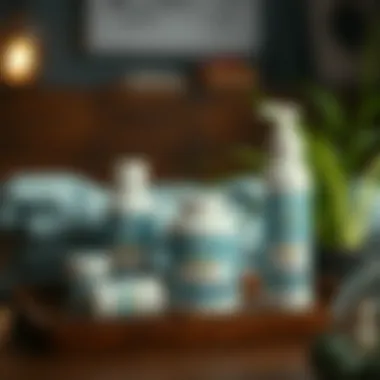

Emotional stressors have a significant impact on the body's overall health, and they can particularly contribute to cold sore outbreaks. Stress elevates cortisol levels, which may suppress the immune system and allow the herpes simplex virus to rear its head. The key characteristic here is that stress can vary widely, from daily challenges to significant life changes, making it a common yet insidious trigger.
One of the unique features of emotional stress is that it can often go unnoticed until symptoms arise. While the advantages of recognizing emotional stressors include the opportunity to implement stress reduction techniques, the downside lies in the difficulty of managing them in a fast-paced world. Techniques like mindfulness, deep breathing, and engaging in hobbies can help, yet may require ongoing commitment to achieve long-term benefits.
Hygiene Practices
Hand Washing
Hand washing is a simple yet effective preventive measure against cold sores. This practice is crucial, particularly since the herpes simplex virus can be easily spread through contact with an infected area. The key characteristic of hand washing is its accessibility; it's something everyone can do, anytime and anywhere. Keeping hands clean minimizes the risk of spreading the virus to others or even re-infecting oneself.
Unique to this practice is its immediate effect; frequent hand washing can dramatically reduce the probability of outbreak. While the advantages are clear, one must be consistent to reap these benefits. Some individuals may perceive the act as tedious, yet making hand washing a routine can effortlessly integrate it into daily life—particularly after touching one’s face.
Avoiding Close Contact
Avoiding close contact with individuals who have active cold sore outbreaks is another preventive measure worth noting. This strategy helps to reduce transmission risk significantly. The key characteristic of this approach is the awareness of social situations that may pose risks, such as gatherings with friends or family where someone might be symptomatic.
The unique feature of this practice is that it relies heavily on mutual respect and understanding among individuals. The advantages of avoiding close contact are obvious; it protects not only oneself but also others who may be susceptible. The disadvantage is that it can complicate social situations. However, open communication about health concerns can foster understanding and reduce stigma.
"Taking preventive measures is akin to setting up a shield before an impending storm."
In summary, implementing preventive measures provides a roadmap for individuals looking to reduce cold sore occurrences effectively. By avoiding common triggers, embracing good hygiene practices, and fostering open communication, people can navigate their health with more confidence.
When to Seek Professional Help
Cold sores, those pesky little blisters brought on by the herpes simplex virus, can often be managed effectively at home. Yet, there are times when it's crucial to reach out for professional guidance. Understanding these moments not only empowers you but can also pave the way for the speedy healing and prevention of complications.
One key aspect is recognizing when your home remedies and over-the-counter treatments just aren't cutting it. Persistent symptoms serve as a crucial indicator that you should seek a healthcare professional's help.
It's common for cold sores to take a few days to heal, but if a sore lingers for over two weeks, it might be time to get a second opinion. Other symptoms worth noting include:
- Severe pain or discomfort,
- Frequent outbreaks in a short span of time,
- Cold sores that appear in an unusual location, such as inside the mouth or eyes.
By being vigilant about these signs, you can prevent unnecessary suffering and get back to your normal routine faster.
Persistent Symptoms
Persistent symptoms can manifest in a variety of annoying ways. Such symptoms might include ongoing pain, swelling, or even the formation of new sores while the existing ones haven't fully healed. For many, it's not just about the physical pain; the emotional toll can be equally debilitating. When numbness or tingling persists, or if the sore's crust doesn't loosen after substantial time, it's advisable to engage with a medical expert.
Apart from the direct discomfort of the lesions, persistent symptoms might signal underlying issues or secondary infections. For instance, if there’s accompanying fever or swollen lymph nodes, it could be a sign that your body is fighting something more than just a mere outbreak. In these cases, a quick visit to a healthcare provider could help clarify matters and direct you toward the appropriate treatment options.
Potential Complications
Ignoring persistent symptoms could lead to serious complications. A cold sore which seems to be a simple nuisance can transform into a severe health problem if not addressed timely. Potential complications might include:
- Herpetic Whitlow: This is a painful infection that can occur on the fingers when you touch a cold sore.
- Eczema Herpeticum: A serious condition that occurs when the virus infects skin that has eczema, leading to widespread infection.
- Eye Infection: This can happen if the virus spreads to the eye, leading to a condition called herpes keratitis; if untreated, it can threaten vision.
End: Navigating Cold Sore Management
Managing cold sores effectively involves a multifaceted approach, which combines immediate interventions, lifestyle modifications, and preventive measures. The significance of this conclusion rests in its ability to empower individuals to take charge of their condition. Cold sores, while often stigmatized, are a common reality for many. Recognizing this can transform how one navigates through both the physical and emotional aspects of outbreaks. Having a grasp of various strategies can be the difference between enduring discomfort and regaining confidence swiftly.
Integrating Multiple Approaches
One key element in managing cold sores involves integrating diverse approaches to treatment. No single solution fits all; what might work wonders for one individual can leave another grappling with persistent symptoms. Topical treatments, such as acyclovir cream or over-the-counter options containing docosanol, serve as a frontline defense. However, these efforts can be significantly bolstered when combined with other strategies.
- Home remedies like applying a cold compress or natural products such as lemon balm extract can soothe inflammation.
- Stress management through practices like yoga or meditation can greatly help. Stress is known to trigger outbreaks, so effectively managing it helps reduce their frequency.
Thus, it’s important to craft a personalized strategy, integrating both medical advice and natural methods. This tailored approach not only reduces symptoms but can also promote overall well-being, which is vital in coping with any chronic condition.
Empowering Yourself with Knowledge
Knowledge is a powerful ally in the world of cold sores. Educating oneself about the Herpes Simplex Virus and its implications can foster a sense of control. Understanding the stages of a cold sore—from its initial tingling to scabbing over—allows individuals to take prompt action at first signs of an outbreak. Furthermore, being well-read on potential triggers and remedies can lead to better management.
- Keep informed about new treatments and ongoing research. Your understanding creates proactive habits that can lessen the frequent nagging of future outbreaks.
- Engaging with communities, whether online or through local health groups, can provide additional support and fresh perspectives.
"Knowledge not only helps in managing situations but also empowers individuals to minimize recurrent problems and live with greater ease."
As one navigates through the complexities of cold sores, it becomes evident that an informed, well-rounded approach can construct a solid foundation for effective management. By applying various methods and remaining conscious of one's body and mental health, individuals can enhance their quality of life and overcome the unpleasantness of cold sores.















